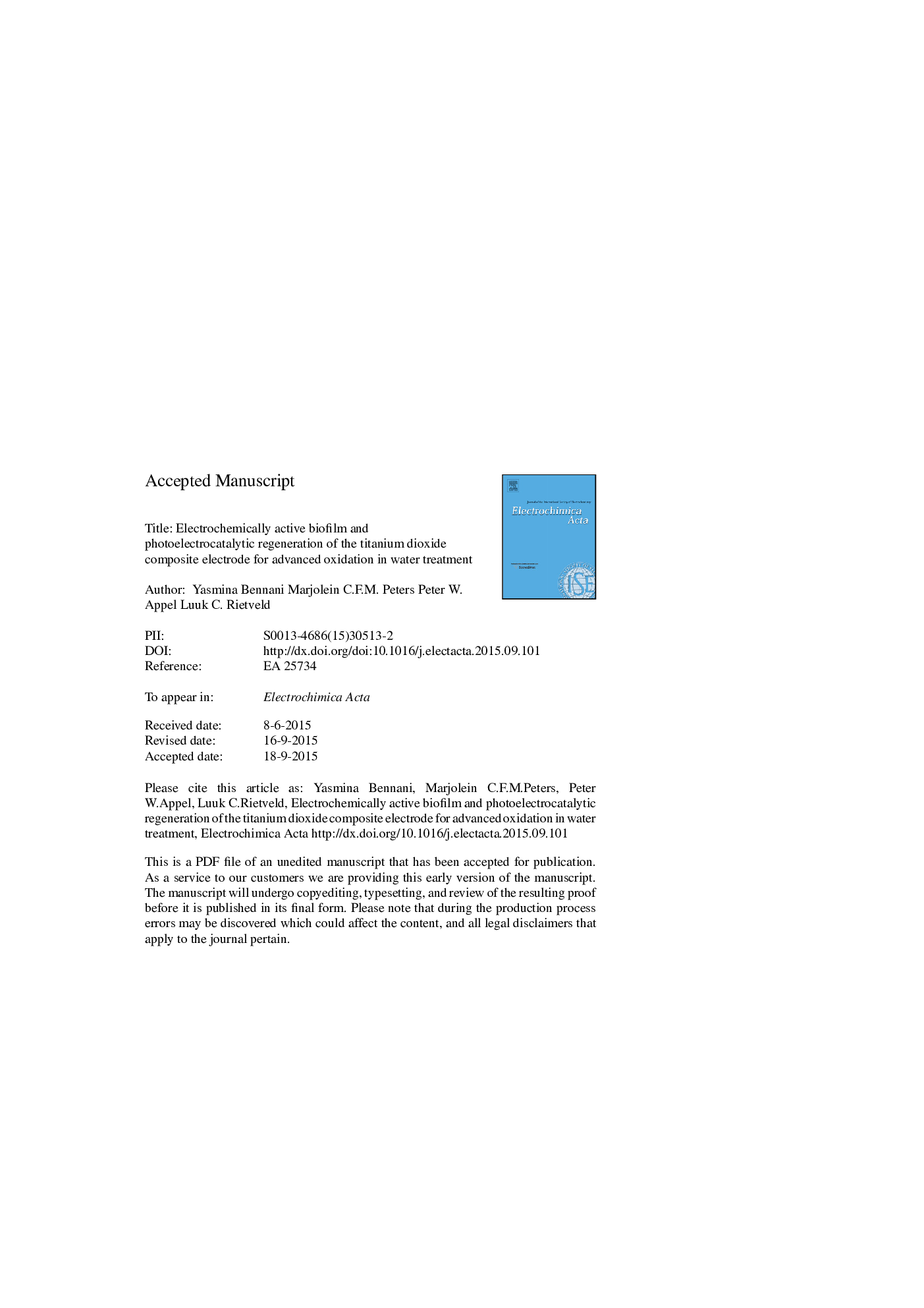| Article ID | Journal | Published Year | Pages | File Type |
|---|---|---|---|---|
| 6610046 | Electrochimica Acta | 2015 | 37 Pages |
Abstract
A novel bio-photoelectrocatalytic system was used to effectively reduce phenol as a model organic pollutant through the utilization of energy derived from bacteria and the use of solar energy for activation of TiO2. In such a system, a synergistic effect occurs between the bio-electrochemical and photocatalytic oxidation processes. TiO2/Ti composite electrodes were operated with variable biofilm coverage (partially developed biofilm after 6 days and fully developed biofilms after 12, 20 and 40 days at room temperature and pH 7). The study depicted the effectiveness of biofilm formation in enhancing the electron transfer. Kinetic analysis showed that the system exhibited a more rapid phenol degradation at a rate two times higher than rates by individual photo(electro) catalytic and biodegradable methods. Higher current density (8.4Â ÃÂ 10â2Â mAcmâ2) and phenol removal efficiency of 62% after four hours of irradiation were observed especially with electrochemically active biofilm developed after 20 days. TiO2/Ti composite electrode. After the additional application of cleaning process, the TiO2/Ti composite electrode could be used several times with nearly the same efficiency, leading to decrease in the final cost of the treatment process.
Related Topics
Physical Sciences and Engineering
Chemical Engineering
Chemical Engineering (General)
Authors
Yasmina Bennani, Marjolein C.F.M. Peters, Peter W. Appel, Luuk C. Rietveld,
